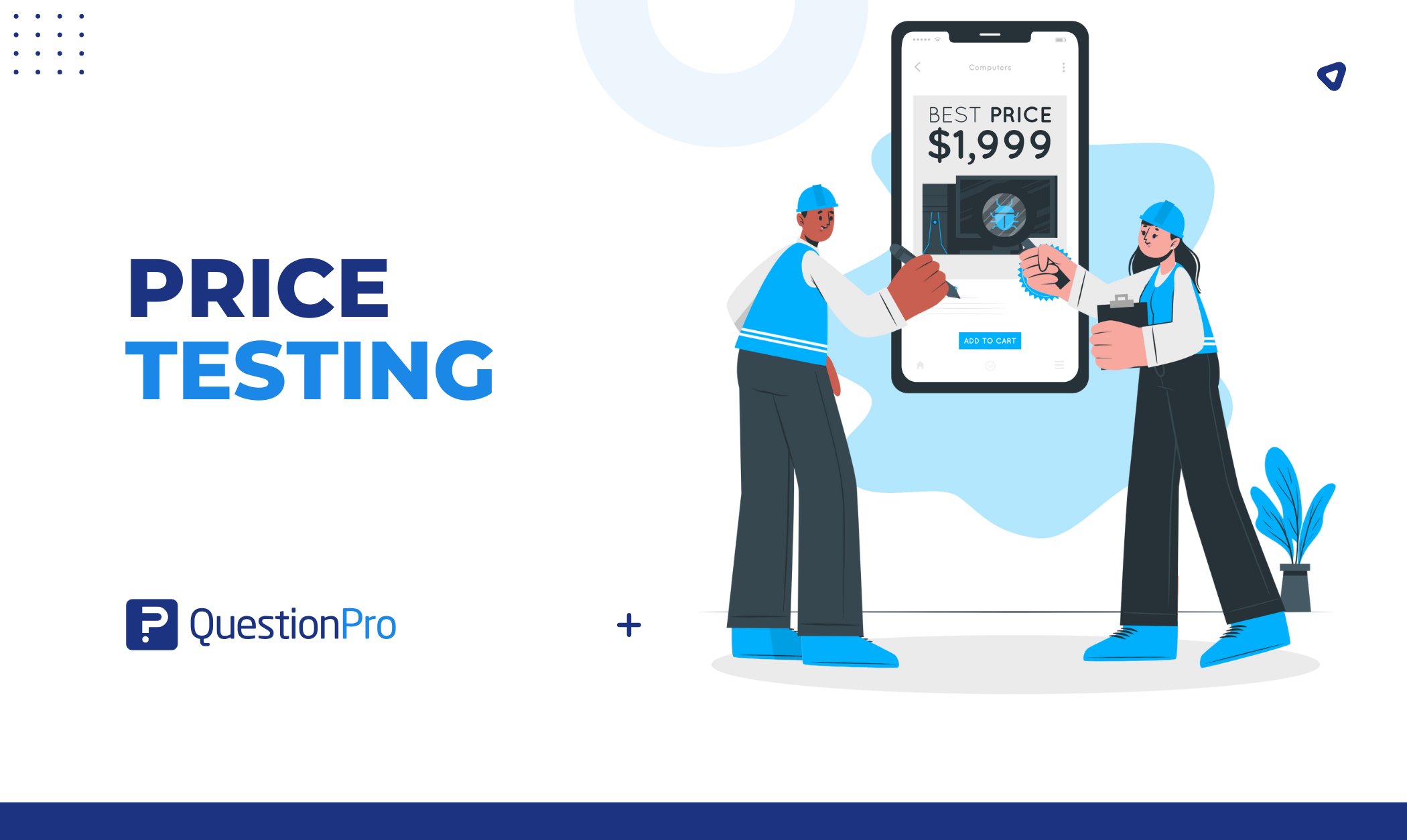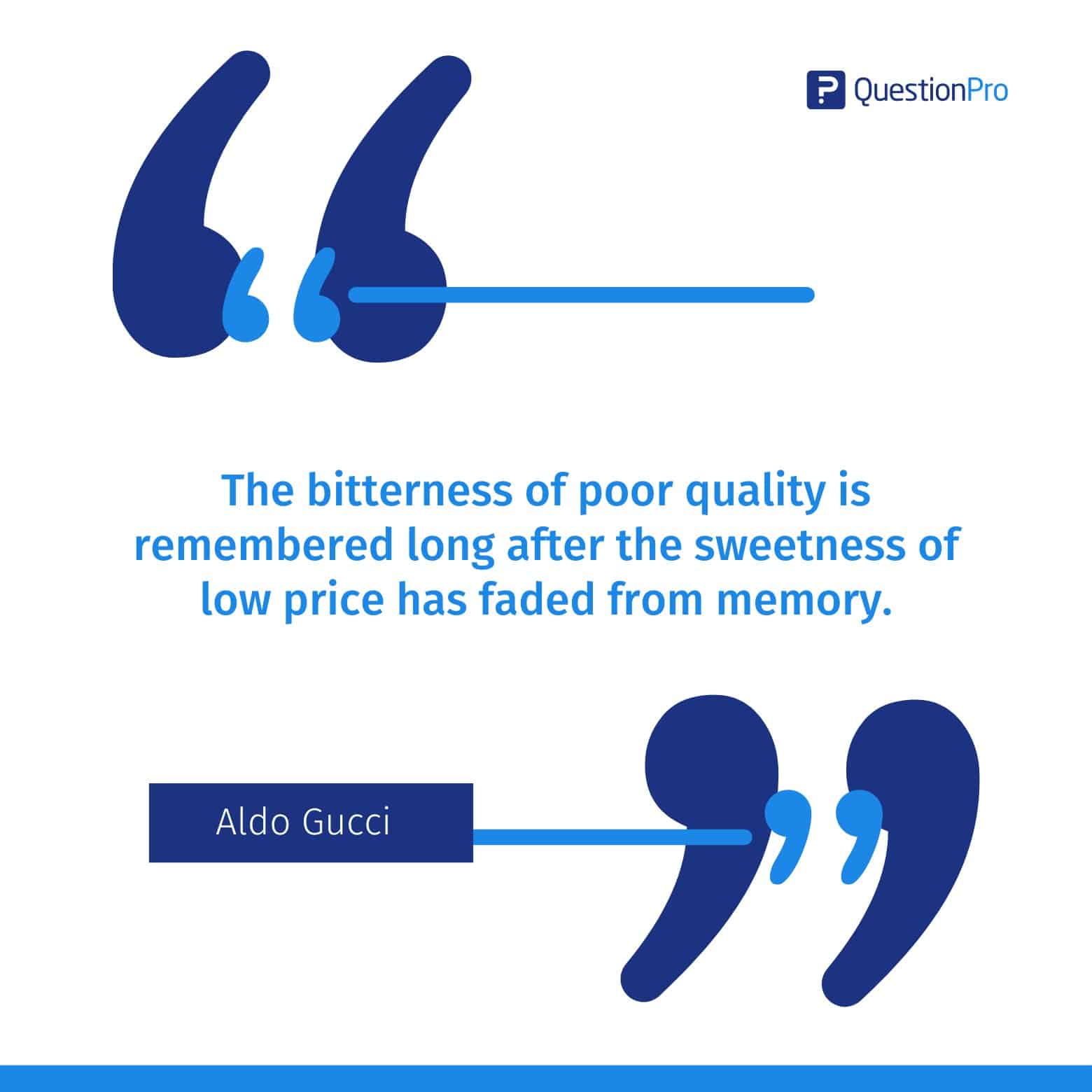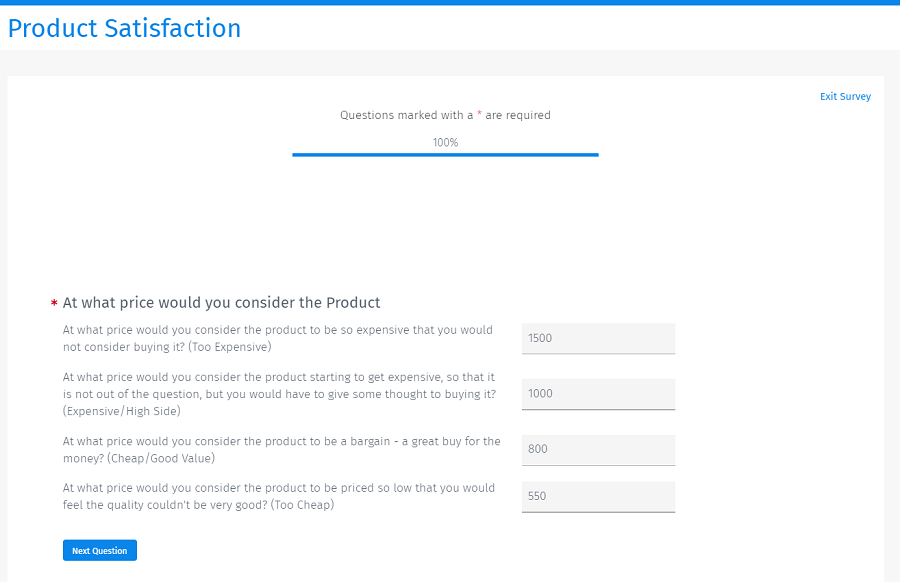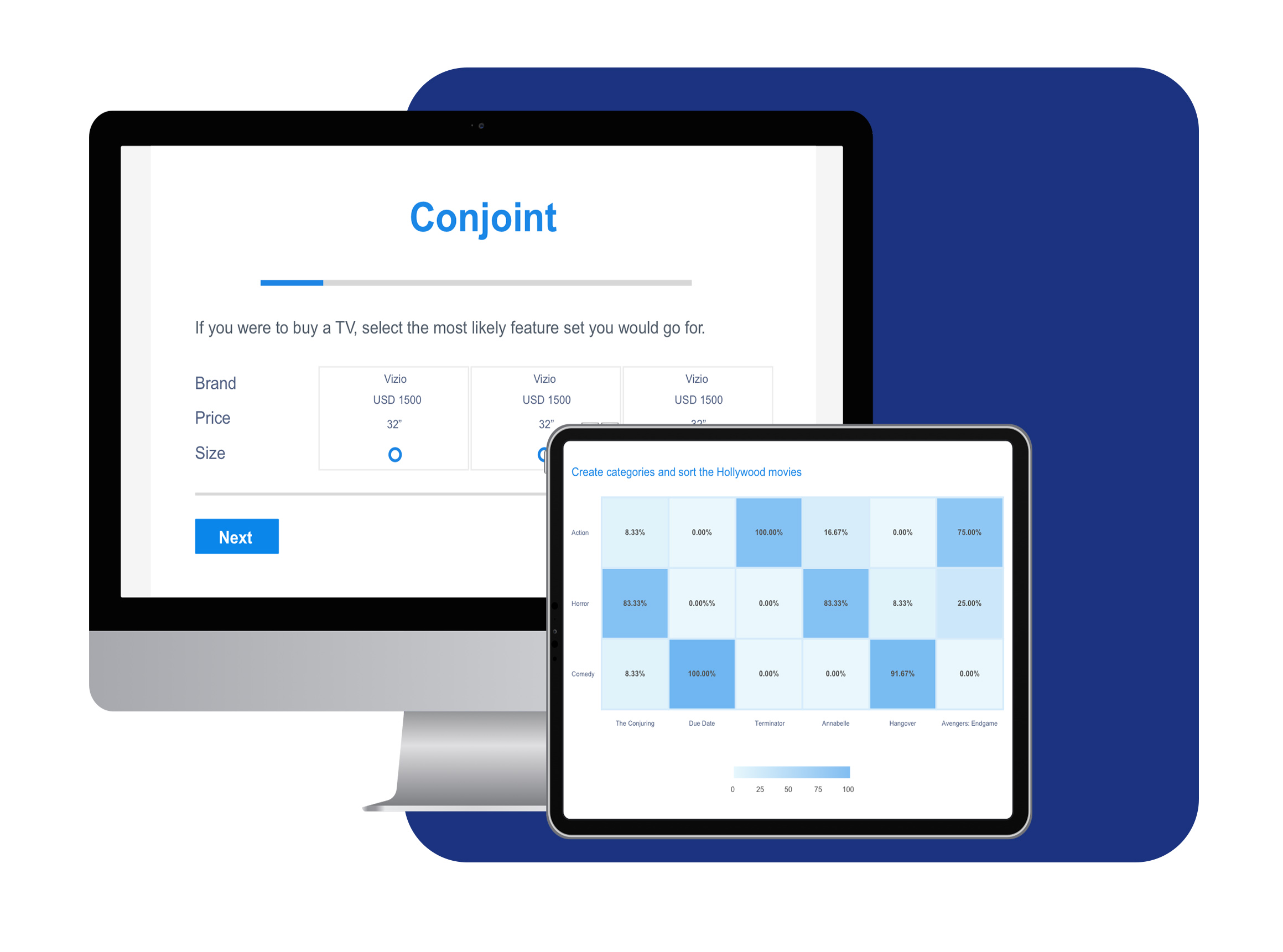
Pricing your product can feel like a shot in the dark. You set a number, cross your fingers, and hope customers bite. But what if you could take the guesswork out of the equation? Price testing lets you do just that by experimenting with different prices and paying close attention to how your customers actually respond.
Price testing is important because it helps businesses determine the optimal price point, which can directly influence customer purchasing decisions and improve revenue.
It’s like having a secret tool that tells you the best price to attract buyers and keep your profits healthy. Additionally, price testing can help protect or enhance your brand reputation by ensuring your prices align with perceived value and build customer trust.
In this blog, we’ll explore price testing, share proven methods to try, and show how platforms like QuestionPro make it simple to get the insights you need before you commit.
What is Price Testing?
Price testing is a technique businesses use to determine the best price for their product or service by trying out different price points and observing customer reactions.
It’s an intelligent way to understand what customers are willing to pay without relying on guesswork or taking excessive risks.
Instead of assuming a price, price testing involves examining customer behavior to gain insights into how various prices affect buying decisions, allowing you to identify the sweet spot where your product sells well and remains profitable.
It’s like running a small experiment with different prices to make sure you’re not charging too much or too little.

The Purpose of Price Testing
The primary goal of price testing is to help businesses find the right price for their products or services that feels fair to customers and supports the company’s objectives.
It’s important to remember that while low prices may attract buyers initially, they can also signal poor quality and harm your brand reputation over time. Price testing helps businesses optimize perceived value, ensuring prices align with the quality and benefits customers expect.
Price testing eliminates guesswork by revealing how customers genuinely respond to different prices. Instead of guessing, businesses gain real insights to set prices that balance value and profitability.
Here’s why companies conduct price testing:
To understand what customers are willing to pay
A key reason for price testing is to discover how much your customers are truly willing to spend. It’s not about guessing but knowing how they perceive your product’s value and how your price fits within their budget.
Price testing helps you determine:
- What price feels fair and reasonable to your target customers
- How pricing influences their buying decisions
- Whether they view your product as premium or affordable
- Which price point best balances sales volume and profit
- If you’ve identified the right price point for your target market to maximize both sales and customer satisfaction
With price testing, you receive real feedback rather than assumptions, helping you set a price that attracts customers and supports your business.
To maximize profit
Another vital purpose of price testing is to maximize profit margins. While it might seem that selling more products always means more profit, that isn’t necessarily true.
Sometimes, selling fewer items at a higher price yields greater profit than selling many at a lower price. Understanding your profit margin and calculating the appropriate markup percentage are essential for maximizing profitability through price testing. It helps you identify which pricing strategy suits your business best.
By testing different price points, you can observe how each affects sales volume and total revenue. It also prevents you from underpricing and leaving money on the table. The objective is to find the ideal balance where sales are strong and returns per sale are maximized.
To reduce risk
Launching a product at the wrong price can lead to poor sales or reduced profits, putting your business at risk. Price testing mitigates this risk by allowing you to gauge customer reactions to different prices beforehand, so you can confidently select a price that attracts buyers and meets your goals.
When aiming to reduce risk through price testing, it’s also important to consider other factors like market trends or competitor activity that may influence your results.
To make data-based decisions
A major reason businesses engage in price testing is to make informed decisions based on real data rather than guesses. Testing prices provides genuine feedback from potential customers about what works and what doesn’t. This data helps avoid costly mistakes or reliance on intuition or competitor pricing alone.
For example, a company might offer a product at $20 to one group and $25 to another. By analyzing which price yields better sales and profit, they can confidently choose the optimal price. It’s crucial to gather enough data to achieve statistical significance, ensuring results are reliable and meaningful for pricing decisions. This way, choices are backed by actual customer behavior, not assumptions.
Curious about Pricing Analytics? Discover how it can help you make smarter pricing decisions with QuestionPro.
Understanding Demand Elasticity
Demand elasticity is a key concept in pricing strategy that measures how sensitive customer demand is to price changes. Simply put, it shows how much your sales volume will fluctuate if you increase or decrease your price. Understanding demand elasticity helps you find the optimal price point that maximizes revenue and profit.
Several factors affect demand elasticity, including consumer preferences, market conditions, and competitor pricing. For instance, if your product has many substitutes or competitors offer lower prices, customers may be more price sensitive. Conversely, if your product is unique or highly valued, demand may be less elastic, allowing you to set higher prices.
Tools like the price sensitivity meter can help gauge how customers react to different prices, providing valuable data for pricing decisions. By analyzing demand elasticity, you can make informed price adjustments that align with market conditions and customer expectations, ensuring your prices stay optimal.
Customer Lifetime Value and Pricing
Customer lifetime value (CLV) is a powerful metric that should influence your pricing strategies. CLV represents the total revenue a customer is expected to generate throughout their relationship with your business. By considering CLV, you can set prices that attract new customers and foster long-term loyalty and repeat purchases.
Understanding your customers’ lifetime value enables smarter decisions about optimal pricing. For example, you might offer special discounts or loyalty rewards to high-CLV customers, knowing these incentives will pay off through increased retention and higher profit margins. This approach maximizes profit while enhancing customer satisfaction.
Incorporating CLV into your pricing ensures focus on both short-term revenue and long-term growth, helping build a loyal customer base and sustainable business.
Common Price Testing Methods
Finding the right price isn’t always straightforward. Pricing too high might drive customers away, while pricing too low can cut into profits. Choosing the right price testing method is critical for gaining actionable insights.
Price testing, combined with understanding pricing elasticity, enables you to identify the best price by experimenting and learning customer responses. Businesses often use a combination of methods to determine what works best.
Here are some of the most common price testing methods used today.
1. Surveys and Direct Customer Feedback
Sometimes, the easiest way to know what customers think is to ask them directly. Surveys and feedback tools help you understand price expectations before launching a product. Tailoring surveys to different customer segments provides nuanced insights into preferences and behaviors.
Analyzing feedback across different segments reveals variations in price sensitivity, helping optimize pricing strategies. Three popular approaches include:
Rating Scales
This tool asks customers to rate their satisfaction with a specific price. Rating scales work like a simple pricing survey question. You show them a price and ask how fair or acceptable they think it is.
For example, you might ask:
“On a scale of 1 to 5, how fair do you think this price is?”
- 1 — Too Cheap
- 2 — Cheap
- 3 — Fair
- 4 — Expensive
- 5 — Too Expensive
By collecting responses from many customers, you can see if most people find your price fair, too low, or too high. This helps you judge if your price is within the acceptable range.
Why use it?
- It’s easy to set up and quick to answer. It also gives a clear idea of how your target audience feels about your pricing.
- Analyzing responses helps predict how different prices might affect conversion rates, guiding pricing decisions.
Van Westendorp Price Sensitivity Meter
The Van Westendorp method is a bit more detailed but very effective. You ask customers four key questions about price:
- At what price would the product be too expensive? (They wouldn’t buy it.)
- At what price would the product be too cheap? (They’d doubt its quality.)
- At what price would the product start to seem expensive, but still acceptable?
- At what price would the product seem like a bargain or a good deal?

This method helps identify price sensitivities among customers and understand how different segments respond to various prices.
Plotting responses reveals a price range that feels right to most customers—not too cheap, not too expensive.
Why use it?
It gives you a clear price range instead of just one price. Helps you avoid setting a price that feels too cheap or too pricey.
Gabor-Granger Pricing Method
This method assesses how likely customers are to buy at different prices. You show several price points, one at a time, and ask if they would purchase at each price.
For example:
Would you buy this product for $10?
If they say yes,
ask about $12, then $14, and so on, until they say no.
By doing this with many customers, you can figure out the price at which most people would still buy, and where demand starts to drop.
Why use it?
Gabor-Granger Pricing method helps you see how price changes affect market demand, helping set prices that improve market share by capturing more customers.
2. Experimental Testing
Instead of just asking, some businesses prefer to test prices in real situations and observe outcomes. Experimental testing often involves running A/B tests or multiple A/B tests to compare pricing options in controlled environments. Two common approaches are:
A/B Testing
A/B testing pits two prices against each other. You offer the same product at two different prices to separate groups, then compare which price drives more sales or profit. This method directly measures pricing effects on sales and customer behavior.
For example, selling a backpack at $40 to half your customers and $45 to the other half, then comparing results:
- Did more people buy at $40?
- Did you make more money overall at $45?
That’s the power of A/B testing; it gives you a straight answer on which price works better in the real world.
Monadic Testing
Monadic price testing takes a different approach. Each group sees only one price and isn’t aware that other prices are being tested. This method can be tailored for product categories to better understand segment-specific reactions.
For example, splitting your audience into three groups:
- Group 1 gets $40
- Group 2 gets $45
- Group 3 gets $50
Each group reacts naturally to the price they see, without comparing. You then measure their buying behavior or ask for feedback. This helps you avoid any price comparison bias and gives you clean data on how each price performs.
3. Market Simulation
Market simulation involves creating “what-if” scenarios before launching a product. Instead of testing prices live, businesses use surveys to present different product and price combinations to customers and observe their responses.
This helps predict real market behavior without risking sales or brand damage from price changes. It also accounts for market dynamics, enabling better anticipation of customer reactions to price shifts.
Conjoint Analysis
Conjoint analysis is a popular market simulation tool. Instead of directly asking about price, you show customers sets of product options with varying features and prices, then ask which they’d choose.

Conjoint analysis can test pricing models like monthly vs. annual subscriptions to see which drives better customer acquisition and retention. It also evaluates different pricing tiers, such as three-tier pricing, by analyzing how price levels affect sign-ups and revenue.
For example:
- Option 1: Smartphone with basic camera — $300
- Option 2: Smartphone with high-end camera + extra storage — $450
- Option 3: Smartphone with high-end camera + waterproof + wireless charging — $600
Customer choices reveal what matters most: price, features, or both. Analyzing responses helps determine what customers are willing to pay for features and which combinations appeal most.
4. Cost-Based Approaches
Not all pricing starts with customer input or experiments. Sometimes, businesses begin with production costs to ensure they don’t sell at a loss. Cost-based pricing is straightforward and common among manufacturers, retailers, and service providers.
Cost-Plus Pricing
Cost-plus pricing calculates the cost to produce or deliver a product, then adds a markup for profit. Businesses decide on a markup percentage to add to production costs, setting a final selling price that ensures profitability.
For example, if production costs $50 and you want a 20% profit, you add $10, making the selling price $60.
It’s a simple formula:
Selling Price = Cost + Markup
Cost-plus pricing is a reliable way to make sure your price keeps your business profitable. It’s often the starting point before you test other pricing methods.
Pricing Metrics to Track
To evaluate pricing strategies, tracking key metrics showing customer responses to prices is essential. Monitoring these metrics provides insights into customer behavior and supports data-driven pricing decisions.
Important metrics include:
- Conversion rates: Percentage of visitors who purchase at a given price. Changes indicate if prices are too high, low, or just right.
- Average order value: Average amount spent per transaction. Tracking this helps find the price point that maximizes revenue without hurting sales volume.
- Customer satisfaction: Regular feedback reveals if pricing meets expectations and fosters loyalty.
By consistently tracking these key metrics, you can identify trends, pinpoint areas for improvement, and adjust your pricing strategies to better align with your business objectives.
The result?
More informed pricing decisions, higher customer satisfaction, and a stronger bottom line.
How to Do Price Testing With QuestionPro?
If you want to test prices and gather real feedback from your target audience, QuestionPro makes it easy. It’s a survey and research platform that lets you collect opinions, run experiments, and analyze results all in one place. You can also use it to test flash sales and limited-time offers as part of your pricing strategy.
Here’s how to use QuestionPro for price testing and pricing research:
1. Create a Price Testing Survey
Start by building a survey to collect meaningful feedback on pricing. QuestionPro’s user-friendly survey builder requires no special skills or coding.
Here’s what you can do with it:
- Rating Scales: With Questionpro, you can ask customers to rate how fair or reasonable they find a certain price.
- Van Westendorp Price Sensitivity Meter: Set up four key questions that help you find the acceptable price range your customers feel comfortable with. QuestionPro even provides built-in tools to analyze the results and show you the ideal pricing zone.
- Gabor-Granger Price Test: Test multiple price points and ask your customer if they would buy at each one.
- A/B Testing: Surveys with different price options for different groups.
- Monadic Testing: Surveys where each respondent sees only one price and gives feedback.
- Conjoint Analysis: Show customers sets of product options with varying features and prices, then ask which they’d choose.
With QuestionPro, you can mix and match these methods in one survey or test them separately, depending on your goals. The platform gives you plenty of options to customize your questions, making it easy to collect meaningful insights about competitive pricing. QuestionPro’s logic and randomization tools help you manage this easily.
2. Target the Right Audience
Price testing only works if you’re asking the right people. QuestionPro lets you reach specific customer groups based on age, location, income, or buying habits. You can use your own customer list or access QuestionPro’s global audience panels.
3. Analyze and Act on the Data
Once your survey is done, QuestionPro gives you ready-to-use reports and dashboards. You can see trends, compare responses, and make decisions backed by real data, not just guesses.
With QuestionPro, you can mix and match these methods in one survey or test them separately, depending on your goals. The platform gives you plenty of options to customize your questions, making it easy to collect meaningful insights about competitive pricing.
Avoiding Common Mistakes in Price Testing
While price testing is powerful, common pitfalls can skew results. Failing to control external factors, such as seasonality, promotions, or market shifts, can impact customer behavior during tests. Using too small a sample size leads to unreliable conclusions and a lack of statistical significance.
Ignoring customer feedback is another mistake. Insights help explain not just what price works, but why. Missing this can mean lost chances to improve pricing.
Avoid these errors by designing controlled price tests with appropriate sample sizes and using a robust price testing framework like A/B testing. This approach yields valuable insights into customer behavior, enabling pricing decisions that drive revenue and profit growth.
Conclusion
Price testing empowers you to understand how customers truly value your products. By experimenting with different prices and observing real reactions, you can find a price that attracts buyers and maximizes profits.
Whether you use surveys for direct feedback, experimental tests like A/B or monadic price testing, market simulations with conjoint analysis, or start with cost-based pricing, each method offers unique strengths to guide your pricing.
The key is to rely on data, not assumptions. Thoughtful price testing reduces risk, informs smarter decisions, and sets your business up for lasting success.
QuestionPro makes price testing simple, flexible, and data-driven. Whether gathering feedback, running live tests, or simulating market responses, it provides all the tools needed to find the right price for your product or service.
Frequently Asked Questions (FAQs)
Answer: Price testing provides real customer feedback on various prices, allowing businesses to avoid guesswork. This data-driven approach helps find a price that balances customer demand and profitability.
Answer: Absolutely. Price testing helps small businesses avoid costly pricing mistakes, understand their customers better, and compete effectively by setting optimal prices.
Answer: Yes, price testing helps reduce risk by revealing how customers react to different prices before a full product launch. This minimizes the chances of poor sales or lost profit due to incorrect pricing.
Answer: The length of price testing varies depending on the method and audience size, but typically ranges from a few days to a few weeks to gather enough reliable data.
Answer: Price testing can be used for most products and services, especially new launches or when changing prices. However, some industries with fixed pricing models might have limited flexibility.







